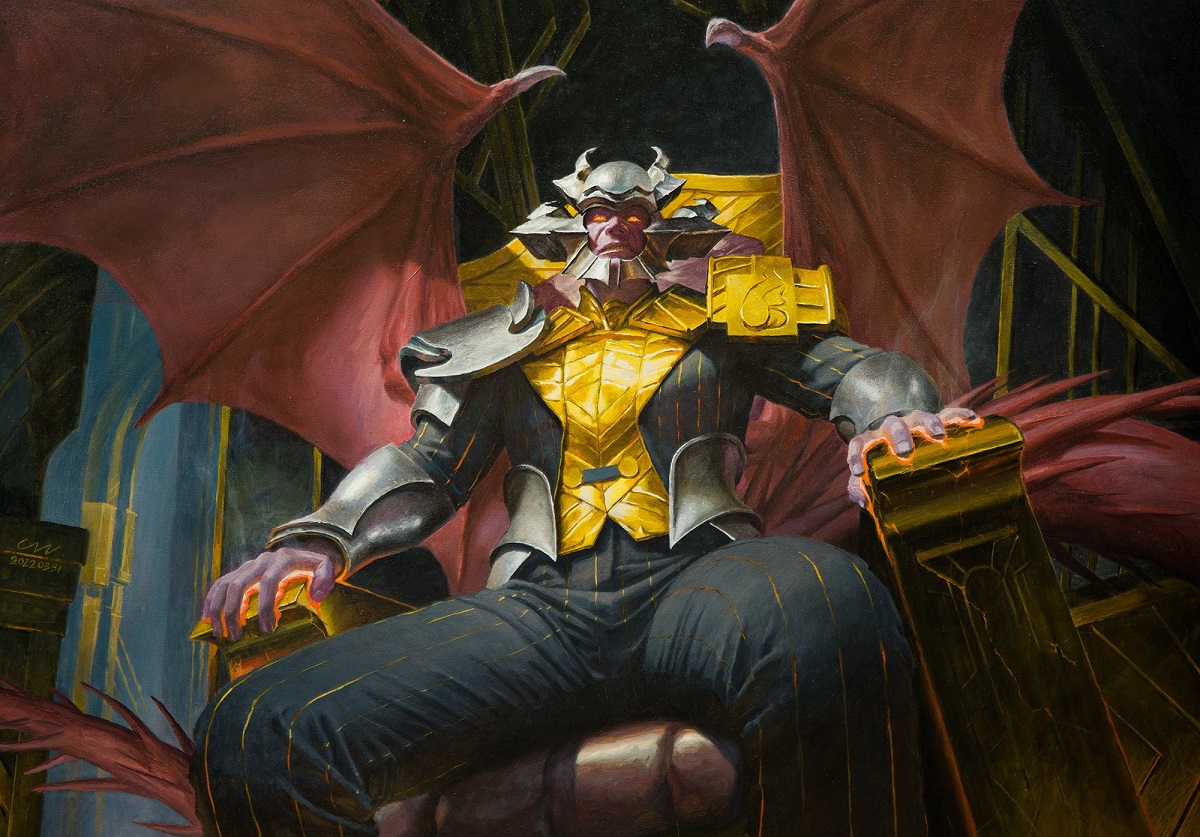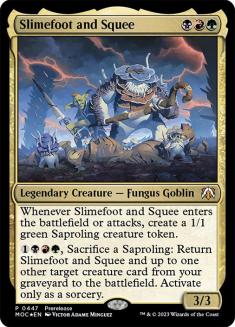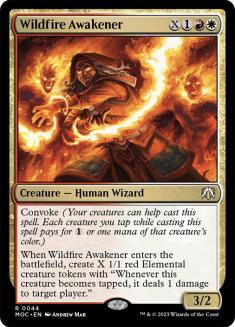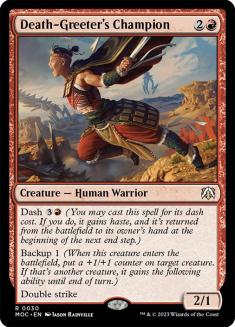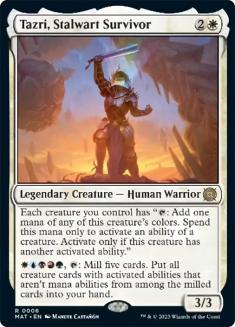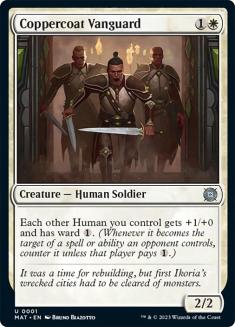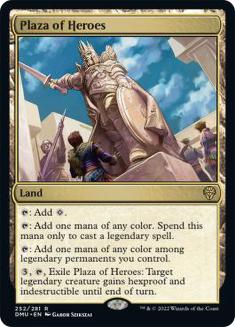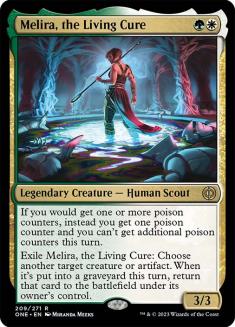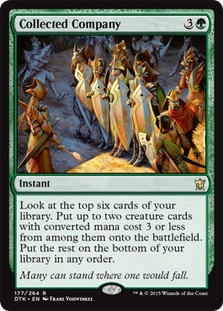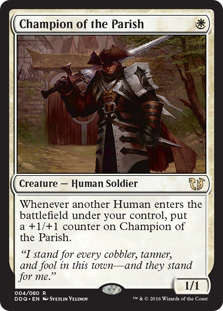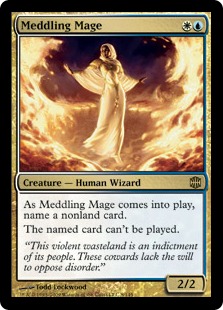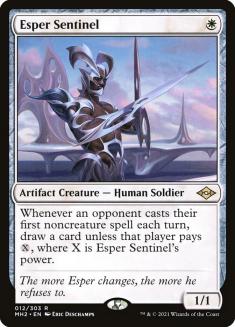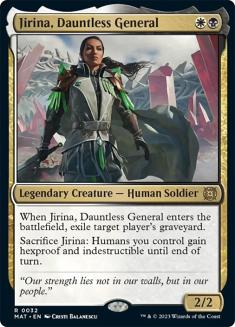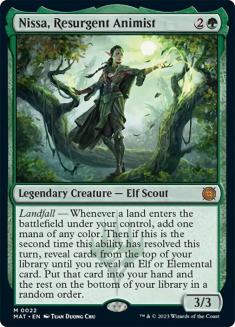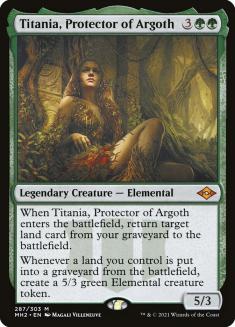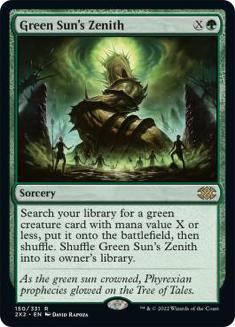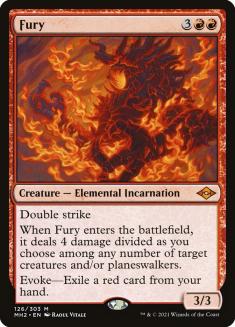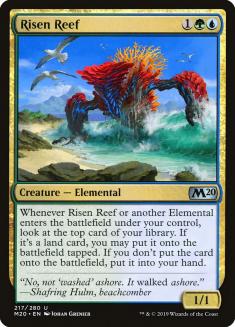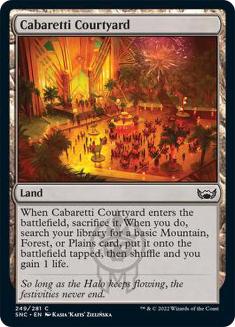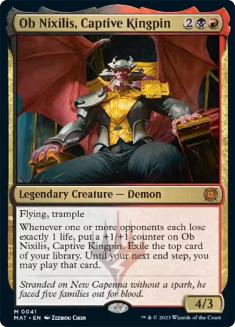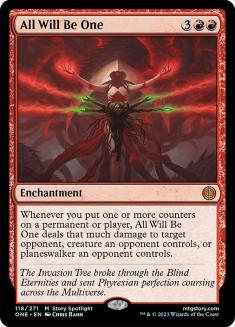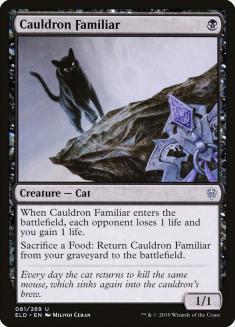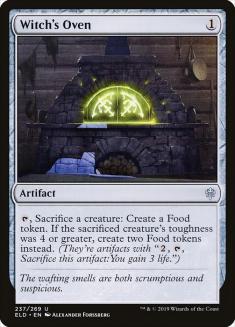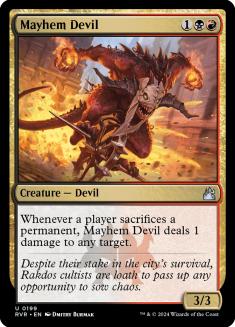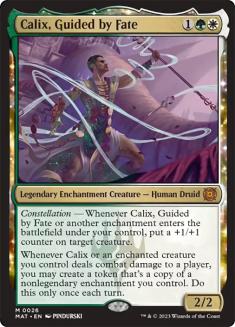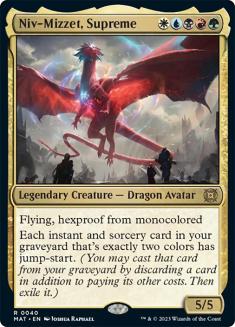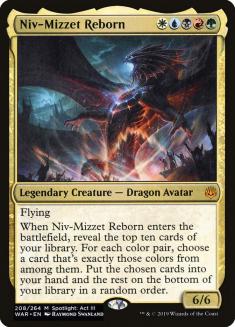March of the Machine: The Aftermath is strange as sets go. The main March of the Machine set already gave us a lot to chew over – a new card type, legendary team-ups, and much more, all bound up in the most verbose set of all time. Maybe that’s why this set exists; if you can’t fit everything, where can you put the leftovers?
The Commander sets that accompany the mainstream set releases are the usual answer, but this release has one of those too! As I covered in my Legacy recap, it never made sense to me that these cards are available in Legacy, but not in Modern or other formats that operate at a high power level. Many cards in these sets are brimming with potential for Constructed formats, but can’t clear the high bar set by Legacy and aren’t legal elsewhere. Aftermath has the opposite problem: it has to be balanced for both Standard and everything else, but you at least get to use its most promising designs to their full potential.
This set also has the main hallmark of a Commander set: legendary creatures with very specific conditions. Reading and understanding a card like Tazri, Stalwart Survivor is the hard part; building around it is relatively simple!
Let’s start with a card whose elegance makes it an outlier here:
Coppercoat Vanguard
You want to pair Coppercoat Vanguard with a lot of Humans – but which ones? Mono-White Humans is a popular deck in Pioneer (though its recent results have not justified that popularity), and Vanguard is a natural fit there, making your one-drops hit harder and protecting important Humans higher up the curve like Thalia, Guardian of Thraben; Adeline, Resplendent Cathar; or Brutal Cathar.
It only boosts power, so a Dauntless Bodyguard or Recruitment Officer will still die just as easily in combat, but it can now threaten to trade with many more creatures. Vanguard sets up the Brave the Elements end-game nicely – Brave gives you one last attack on a stalled battlefield, and Vanguard adds enough power that this attack is more likely to be lethal.
The bigger Humans decks, like Bant Humans, and the more ambitious lists leaning on Plaza of Heroes have more competition for those slots, given their access to more colours. They also have less need for Vanguard, as their creatures are naturally bigger and you have fewer of them to receive that boost at any given time.
Humans is enjoying a slight resurgence in Modern, though these days you’re more likely to see Adeline protected by Shining Shoal than Meddling Mage backing up Mantis Rider. Here, you care more about the disruptive abilities on your creatures than their damage output. Thalia’s Lieutenant only makes the cut because it offers a strong and permanent power boost, and Vanguard is no Thalia’s Lieutenant. Ward 1 is a nice bonus, but Unsettled Mariner isn’t rhyming much in Modern, either.
Jirina, Dauntless General is another candidate for these more colourful Humans lists if you have enough high-value legendary Humans to protect. I’m not sure when or why exiling cards from graveyards became the one skill that Humans reliably have in Magic, but they will have to branch out eventually to avoid going extinct.
Nissa, Resurgent Animist
Let’s turn to a more complicated tribal card that is already proving itself:
Without any tribal tie-in, this Nissa is a bigger, bulkier Lotus Cobra – a card that sees little play despite its raw power and is much stronger at two mana than three. In Modern, Tireless Provisioner is a three-drop that fills that role much better and sees no play either.
With the tribal element, Nissa suddenly becomes an appealing rarity – a mana engine that also gives you a productive use for that mana. That payoff can take many forms, and building around Nissa is an interesting puzzle.
At one extreme, you can build a deck with only one other Elf or Elemental to maximize your odds of finding it. Your ramp deck with Titania, Protector of Argoth as its curve-topper and other cards to combo with it can now accelerate into Titania and find Titania at the same time. Similarly, you can imagine a Commander deck with Nissa at the helm that is guaranteed to have a fast Nissa, which is then sure to hit a specific card.
If this is your goal, Nissa itself gets in the way – if you’re able to trigger your first copy of Nissa, you probably don’t want to hit the second copy. Nissa becomes more powerful the fewer copies you run, creating a trade-off that is only fitting for a legendary creature.
If you just want to use Nissa as a value engine, hitting the next copy may be good insurance against the first one dying. The opponent feels obliged to remove the first Nissa to stop the cascade of card advantage, but that will only delay the inevitable. An early Aspiringspike brew used Nissa in a classic Jund Midrange deck with Bloodbraid Elf and Fury as the other Elf and Elemental respectively – these cards operate differently but work towards the same grindy goal.
If you can rig Nissa’s game, you don’t have to build your whole deck around that one creature. You can imagine the popular Green Sun’s Zenith decks in Legacy running a single Nissa to find with it, and that Nissa in turn can draw an Elvish Reclaimer or Endurance with each trigger.
The most obvious home for Nissa is already on the scoreboard. Four-Colour Control with Omnath, Locus of Creation and the Modern Horizons 2 evoke Elementals is a Modern staple at this point, and Nissa is another compelling option for the flex slots in these slimmer 60-card lists. A Turn 3 Nissa lets you cast Omnath and sacrifice a fetchland on Turn 4 or hard-cast the Fury or Solitude that Nissa just delivered to you.
The most direct competition comes from Risen Reef. Reef is much more fragile, especially in a format full of Wrenn and Six, but it makes up for that by giving you an immediate return even if it dies on sight. When Reef lives and you untap with it, you can stitch together some absurd sequences that lock up the game. You can run out Reef on Turn 3 and be happy with either outcome. If you have to tap out for Nissa on Turn 3 and it dies, you keep falling further behind – but you want to use that spot on your curve and not hold back Nissa as a ‘four-drop’.
What if you played both? If Nissa and Reef each demand removal, you can overload that removal by presenting a steady stream of threats and use the extra copies of Fury and Solitude you find to keep up on the battlefield. With the Risen Reef builds, Reef is often the card you most want to draw – and now you have more ways of doing just that! This leaves less room for other three-drops like Teferi, Time Raveler and Fable of the Mirror-Breaker or support cards like removal, but Nissa lets you commit to the Elementals plan more fully now.
Nissa is a tough sell in Pioneer, where you’re limited to four Fabled Passage instead of fourteen effective Flooded Strands, but love finds a way. Omnath suffers from this lack of fetchlands too, but once you are priced into these bargain-bin versions like Cabaretti Courtyard, Omnath starts to look as terrifying here as in other formats.
Ob Nixilis, Captive Kingpin
And now for something completely different:
This newly desparked Ob Nixilis has a condition that’s at once oddly specific and very easy to meet.
In Standard, all eyes are on the infinite combo with All Will Be One. Adding a +1/+1 counter to Ob Nixilis causes All Will Be One to deal a paltry one point of damage – the right amount to trigger Ob Nixilis and add a counter to it, repeating the cycle. Getting that first trigger is the tough part, but Graveyard Trespasser is a Rakdos Midrange staple, and you can find narrower ways to meet that requirement if you need them.
Right now this combo is pushed out by and inferior to the usual Rakdos Midrange tools, but I expect there may be some space to fill in those decks after the Banned and Restricted announcement in a few weeks…
Ob’s more immediate and likely home is Rakdos Sacrifice in Pioneer:
The flagship cards and combos of Rakdos Sacrifice all hit the opponent in increments of one over and over again. If you have Ob alongside Mayhem Devil, every game action compounds on itself and allows some ridiculous turns; Ob by itself answers the question of what you do when you don’t have Devil. Some previous lists splashed an entire colour for Korvold, Fae-Cursed King to fill that gap; Ob is a cheaper, on-colour card that’s close enough.
Calix, Guided by Fate
Calix, Guided by Fate is a strong card in search of a home. Selesnya Auras in Pioneer is an aggressive deck based around enchantments, but it wants Gladecover Scout and Light-Paws, Emperor’s Voice rather than a clunky three-drop.
Selesnya Enchantments in Standard might be just the ticket. This deck is less suited to the aggression that Calix encourages, but you could view that as an opportunity – Calix now opens up these proactive starts that can spiral out of control. With Calix in mind, you want more removal to clear the way and more cheap attackers – Kami of Transience is an appealing throwback to the Naya Runes days – so some changes are needed, but any excuse to ditch the weaker enchantments is welcome.
Niv-Mizzet, Supreme
Finally, we get to feature everyone’s favourite magic Dragon. Niv-Mizzet, Supreme competes with its own former self in the one archetype that can support either, but it’s a welcome addition to that arsenal – and running the extra twenty cards for Yorion, Sky Nomad gives you some slots to fill. One issue that plagues Niv-Mizzet Reborn and similar cards like Atraxa, Grand Unifier is that if they die immediately while you’re under pressure, you might too. It doesn’t matter how many cards they give you if you don’t get to untap.
Niv-Mizzet, Supreme shrugs off almost all targeted removal – the occasional Dreadbore and Teferi, Hero of Dominaria are the only answers in the popular Pioneer decks, for example – and lets you recast your best spells instead of relying on the roulette wheel to turn up more. In particular, you can Bring to Light for Niv-Mizzet, Supreme and then jump-start that same Bring to Light for the ideal follow-up.
In Modern, the new Niv-Mizzet’s form of protection is even more valuable in the face of premium removal like Unholy Heat and Solitude (though Teferi, Time Raveler is as frustrating as ever), and the roster of good gold spells is much deeper. Casting Vindicate or Lightning Helix once feels good – why not do it again?
For a set as small and strange as March of the Machine: The Aftermath, there’s a lot to think about here. These cards have been let loose unexpectedly in smaller Constructed formats, and they are ready to make the most of that opportunity.

